“In 1967, the Monkees sold more records than the Beatles and Rolling Stones combined”. – Michael Nesmith, The Monkees
Think about it. In that year, one of those bands released Between the Buttons, Flowers, and Their Satanic Majesties Request. The other one released Sergeant Pepper’s Lonely Hearts Club Band and Magical Mystery Tour.
And it must be true because in 1986 the Washington Post told its readers: “In 1967 they sold 35 million albums, twice as many as the Beatles and Rolling Stones combined.” In 2016, Vice repeated the fact: “In 1967, The Monkees TV show was a smashing success, and the self-titled album released to complement the show sold 35 million records, outselling The Beatles and The Rolling Stones combined.” –Flashbak
Certain music elitists love to rag upon the Monkees, the made-for-TV 60s pop band who sold a ton of albums, put together a fashion line for Sears, hung out with the Beatles, made a million bucks for Neil Diamond, and introduced the world to Jimi Hendrix.
In the eye of this contrived hurricane was the under appreciated Michael Nesmith, whose death from heart failure came unexpectedly, as did many of the events in his unpredictable life.
Said Rolling Stone in their article Michael Nesmith, Monkees Singer-Songwriter, Dead at 78:
Monkees singer and guitarist Michael Nesmith, a pop visionary who penned many of the group’s most enduring songs before laying the groundwork for country rock with the First National Band in the early Seventies, died Friday from natural causes.
Compare that with the blip that appears in The Rolling Stone History of Rock and Roll (1976):
“The consummate artifact of rock consumption stardom was The Monkees, the first major rock band expressly designed, crafted, and manufactured for pop stardom. After watching the Beatles tear up America in 1964, Don Kirshner, the mastermind behind the Brill Building pop scene, realized that the Liverpudlians had unleashed a potent–and potentially lucrative–mania that had yet to be fully tapped.”
They go on:
“Guided by criteria gleaned from pilot scripts ad Kirshner’s own shrewed sense of the pop marketplace, four Monkees were chosen in auditions. The execs settled on Mickey Dolenz and David Jones, two actors who had never played a note, and Peter Tork and Mike Nesmith, two musicians who oozed charm.”
Already we have veered into the bogus “Monkees had no talent” narrative. Dolenz had in fact acted since childhood, starring in his own network TV series, “Circus Boy,” on NBC and ABC from 1956 to 1958.
Jones' singing landed him the Artful Dodger role in the London production of Oliver! He appeared with the cast on The Ed Sullivan Show the night the Beatles were introduced to America, Feb 9, 1964. He was also the reason another British singer changed his name to David Bowie.
The Monkees premiered on NBC on Sept 12, 1966, and was a blatant rip on Help-era Beatles with a few twists and shouts. Rather than cavorting globally as the most popular rock group in the world, California dreamers Peter, Davy, Mike, and Micky were unknown to all, except for the millions of viewers to the weekly sitcom, which lasted until March 25, 1968
.The famous New York press conference, where the lads from Laurel Canyon “confessed” to not playing their own instruments on their records (much in the same way the Beach Boys had not played on Pet Sounds or Nancy Sinatra on “These Boots Are Made for Walking”), took place in 1967.
Oddly enough, Nesmith cared much more about this detail than did most of his fans. He was a fine guitarist and songwriter. By and large, he led the rebellion to make a believer out of Kirshner and gain the freedom to create.
It wasn’t the only intellectual music battle the lanky Texan would find himself in. Before beating out Stephen Stills and Charles Manson in the Monkees audition (how DO you show that on a resume?)
Nesmith had been song-plugging his music around LA. “Different Drum” found its way to Stone Ponies singer Linda Rondstadt, resulting in a huge hit that could easily have given Nesmith a songwriting career comparable to that of John Hartford or Jimmy Webb.
After becoming an overnight sensational primetime primate, Nesmith was John Lennon’s invited guest alongside the other Beatles, Mick Jagger, Keith Richards, Marianne Faithfull, Donovan, George Martin, and 40 musicians from the Royal Philharmonic and London Symphony Orchestras. It was at a recording session the evening of February 10, 1967. Just another “day in his life.”
Jimi Hendrix did in fact open seven shows for The Monkees during their first U.S. tour in 1967. He had originally agreed to 29 shows, but requested and received an amicable departure because the bubble gum crowd had no appreciation for the Experience. They craved Monkee business.
Ironically, the Monkees last act as a group was to go full blown psychedelic with their self produced film Head (1968). An audio visual sugar cube, it starred, in addition to the Prefab Four, Frank Zappa, Sonny Liston, Annette Funicello, Teri Garr, Victor Mature, and Jack Nicholson.
Michael’s mother was Bette Nesmith Graham (Mar 23, 1924 - May 12, 1980), described as “an American typist, commercial artist, and the inventor of the correction fluid Liquid Paper.” She died ten years after The Monkees first breakup and left her 38-year-old son a cool fifty million dollars. Michael used the money for philanthropic projects and film. Among his endeavors, he was executive producer of Repo Man (1984) and his television special Elephant Parts (1981) for which he won the first Grammy given for Video of the Year.
The Monkee NBC wanted to call “Wool Hat” (he refused) was so intrigued with the relationship of video with music, he envisioned what became MTV. He pitched Time-Warner an idea around a 24-hour music television stream built around videos as radio had been built around records. He called it Popclips (complete with VJs), but turned down the idea of managing the service.
The video bug didn’t leave. In the 1980s his creation Pacific Arts Corporation built up the largest non-theatrical home video catalog, securing works by Ken Burns, Jacques Costeau, and more. His company developed the PBS Home Video label.
Nesmith’s life was a rock and roll paradox. He will be remembered mostly for his roller coaster times as a Monkee and ultimately included reunions he participated in and ignored in the ensuing decades. His most recent was a tour he completed with Micky Dolenz a month ago, a series of shows that found the pair joking, playing, and enjoying what would become their last train to Clarksville.
Ironically, his pioneering work in the field of country rock was a puzzle and disappointment for him. His First National Band recorded three albums and broke up just before the Eagles took the sound to the bank.
“I was heartbroken beyond speech. I couldn’t even utter the words ‘the Eagles,’ and I loved Hotel California and I love the Eagles, the Flying Burrito Brothers, and the Byrds’ Sweetheart of the Rodeo, all that stuff. That was right in my wheelhouse, and I was agonized, Van Gogh–agonized, not to compare myself to him, but I wanted to cut something off because I was like, ‘Why is this happening?’ The Eagles now have the biggest-selling album of all time and mine is sitting in the closet of a closed record company?”
–Michael Nesmith in Rolling Stone, 2018.
Listening a few decades later, in light of a departure, Nesmith’s eclectic cowboy tunes have too much humor and prairie starlight to compete in an Eagles fast lane. The music is western, not really country. It’s coming from somewhere under a prairie moon that hovers pink and lonesome in the skies between Bakersfield and Dallas.
Michael Nesmith forms a unique link that connects 70s Texas to 60s pop, and harkens back to the America of 40s Hollywood. To future generations who stumble upon it, his music will sound original and unexpected, as shiny and non-directional as a tinsel tumbleweed.
Future curators will marvel at this accidental tourist who traveled to the beat of a different drum.
Here’s a few of Michael Nesmith’s greatest hits:
“With Infinite Love we announce that Michael Nesmith has passed away this morning in his home, surrounded by family, peacefully and of natural causes,” his family said in a statement. “We ask that you respect our privacy at this time and we thank you for the love and light that all of you have shown him and us.”
–The Nesmith Family




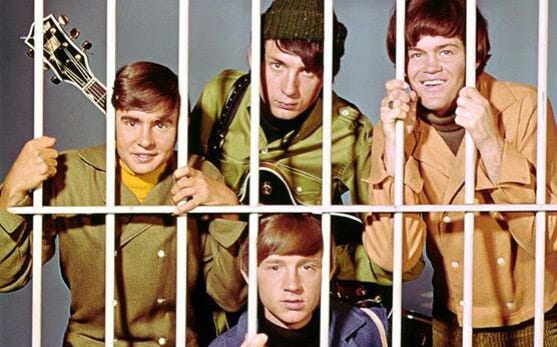

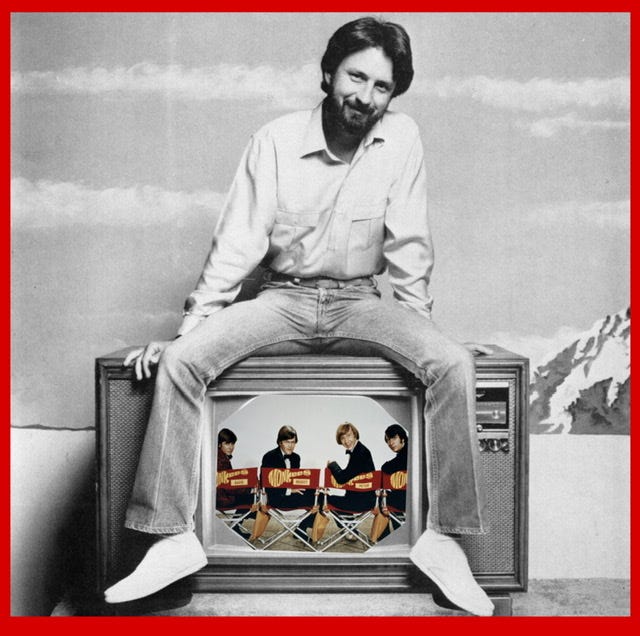

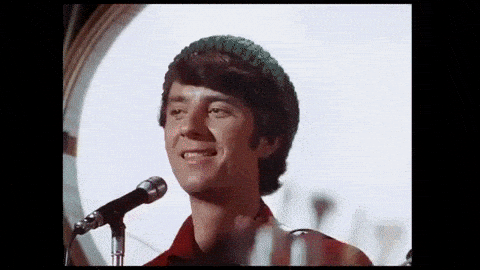
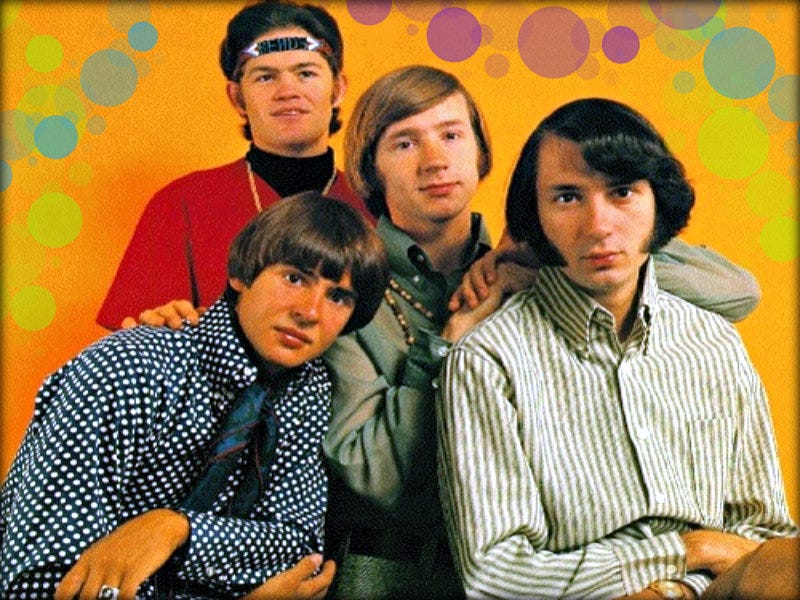
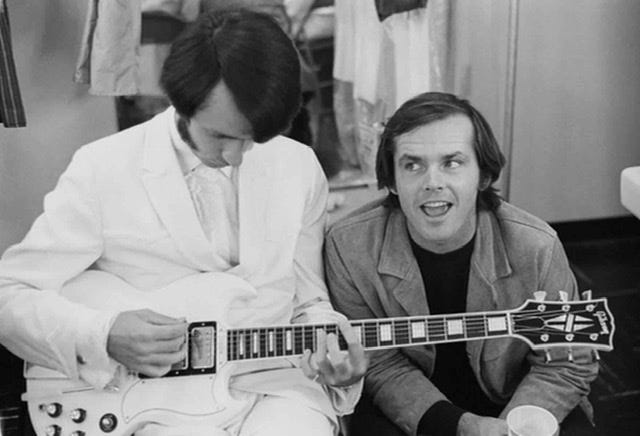
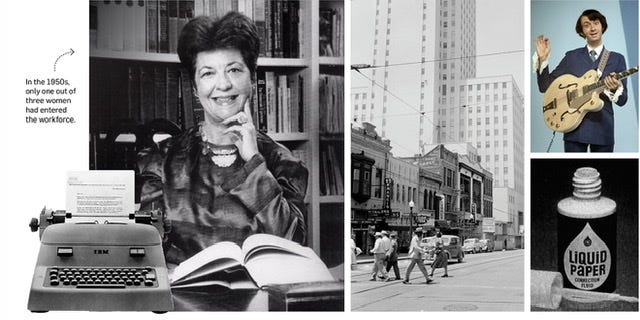
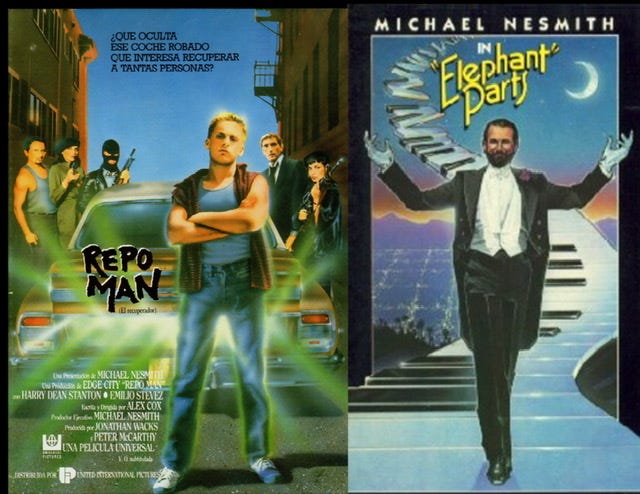
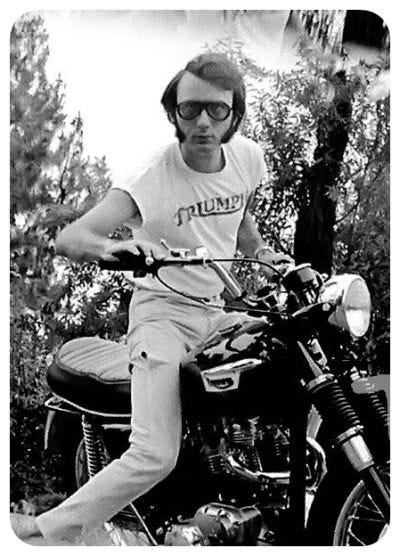
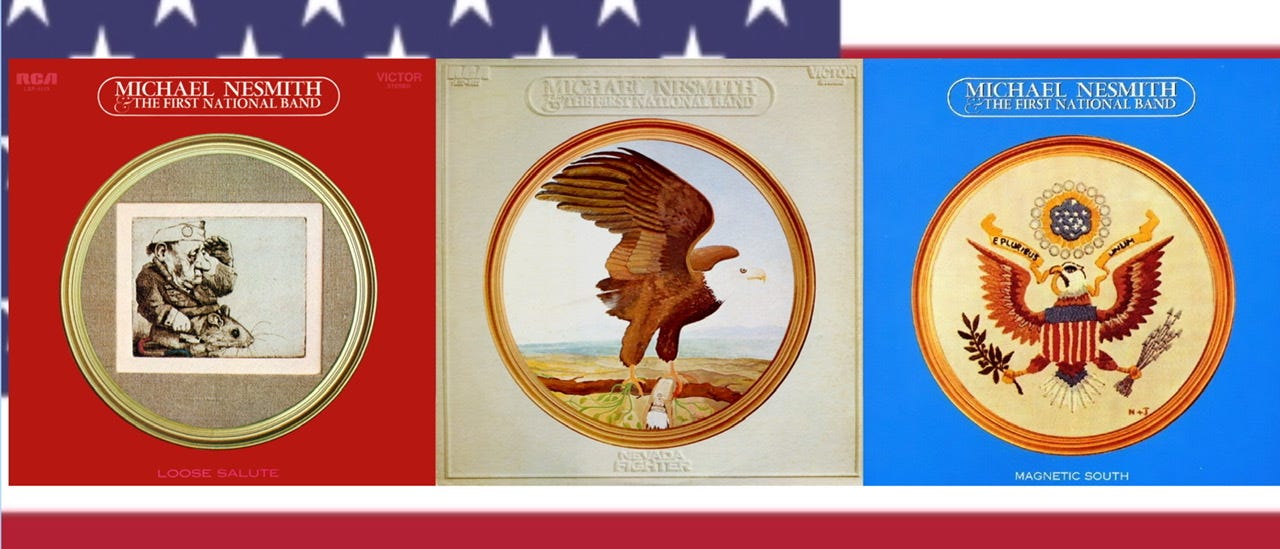
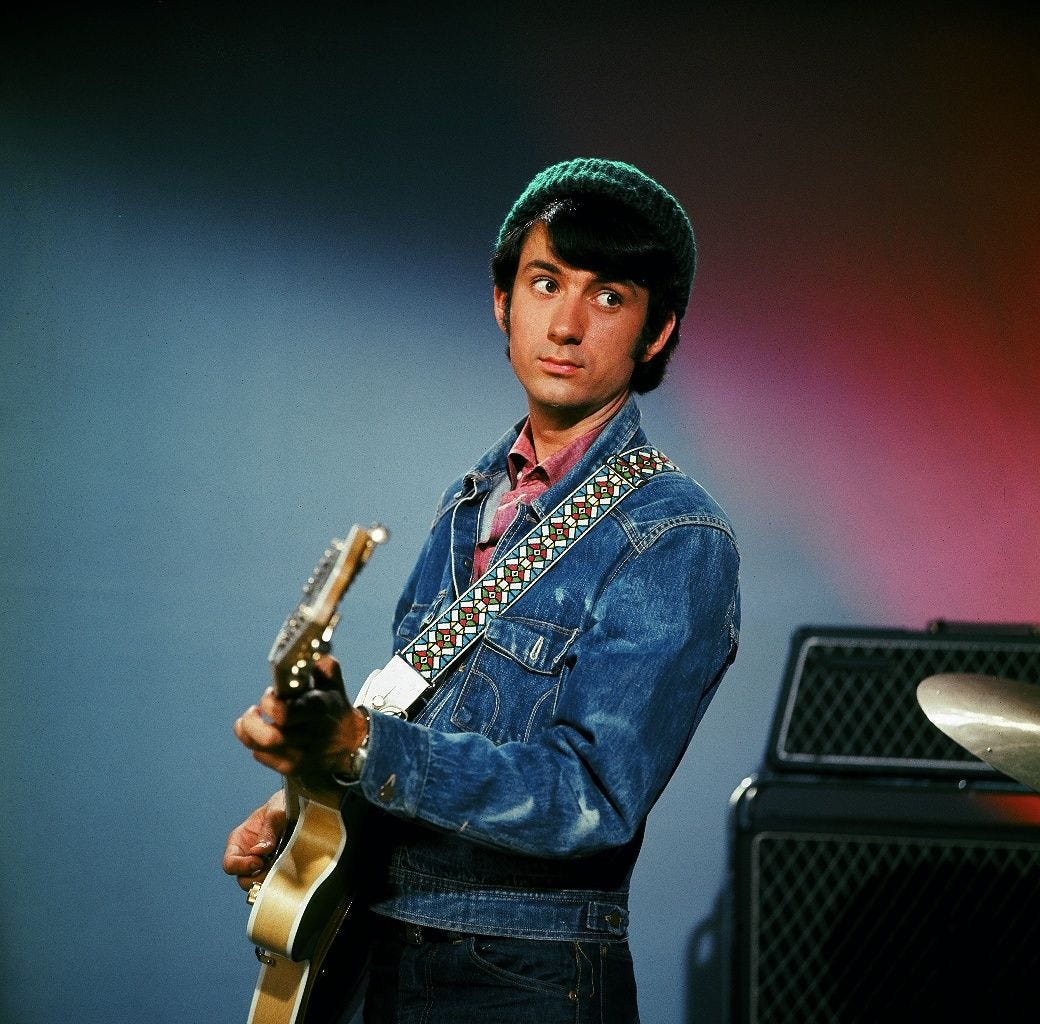
Hahaha “rio” is a videography masterpiece!